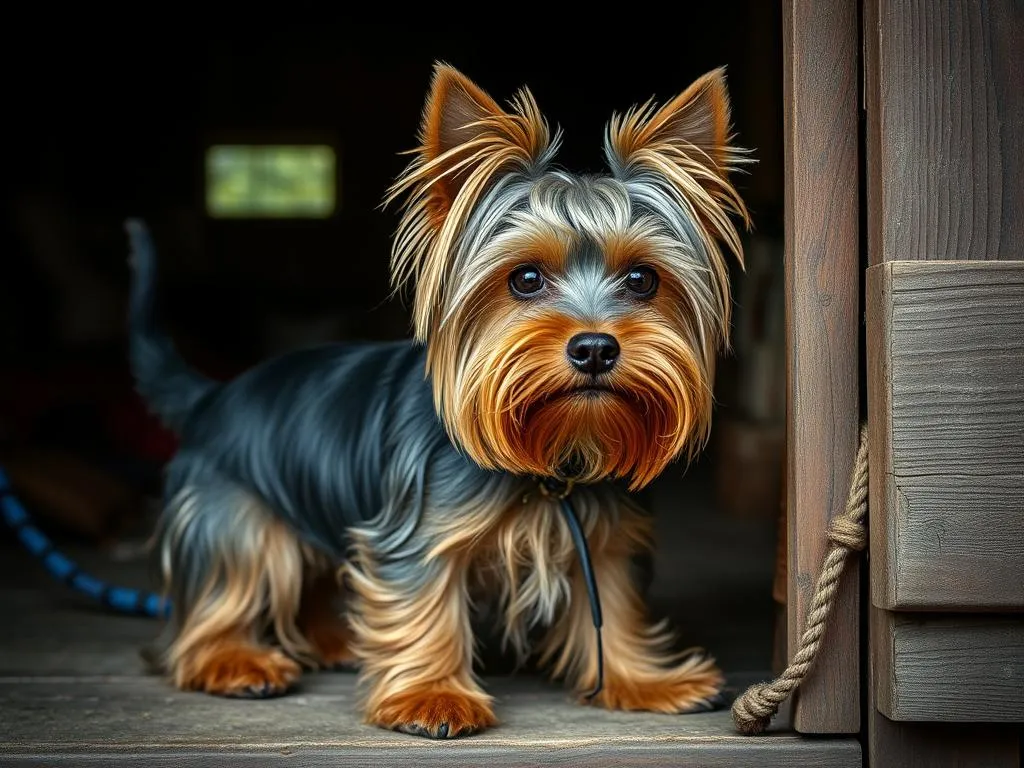
Introduction
Taking care of a dog involves more than just feeding and walking them; it encompasses a comprehensive approach to their health and well-being. Every breed comes with its unique set of health care needs, and as a dog owner, understanding these can significantly impact your furry friend’s quality of life. Among popular breeds, Yorkshire Terriers stand out not only for their cute appearance and lively demeanor but also for specific health considerations that every owner should be aware of. One common question among prospective Yorkshire Terrier owners is, do Yorkshire Terriers shed? This article aims to answer that question while exploring the broader context of health care for this beloved breed.
Understanding Yorkshire Terriers
Breed Characteristics
Yorkshire Terriers, affectionately known as “Yorkies,” are small dogs with a big personality. Typically weighing around 4 to 7 pounds, they are recognized for their long, flowing coats that can reach the ground. Their fur is fine and silky, often resembling human hair more than typical dog fur. The standard colors are a mix of blue and tan, which makes them visually distinctive.
In terms of temperament, Yorkshire Terriers are intelligent, curious, and energetic. They are known for being affectionate with their owners but can also display a feisty attitude, making them excellent watchdogs. Despite their small size, they often have a larger-than-life presence, which can be both charming and challenging.
Health Issues Common in Yorkshire Terriers
While Yorkshire Terriers are generally healthy dogs, they do have some genetic predispositions to certain health issues. Some common health concerns include:
- Dental Issues: Due to their small mouths, Yorkies are prone to dental problems, including tooth decay and gum disease. Regular dental care is crucial.
- Patellar Luxation: This is a condition where the kneecap dislocates, which can cause pain and mobility issues.
- Hypoglycemia: Small breeds like Yorkies can experience low blood sugar levels, especially in puppies.
Regular veterinary check-ups are essential to catch any potential health issues early and ensure that your Yorkshire Terrier remains healthy and happy.
Shedding in Dogs
What is Shedding?
Shedding is a natural process where dogs lose old or damaged hair to make way for new growth. This process can vary widely among different dog breeds and can be influenced by several factors, including seasonal changes, health conditions, and stress levels.
Shedding Patterns in Different Breeds
Dogs are categorized into three main shedding types:
- Low-Shedding Breeds: Breeds like Poodles and Bichon Frises are known for their low-shedding coats due to their hair-like fur that doesn’t fall out as readily.
- Moderate-Shedding Breeds: Breeds such as Beagles and Bulldogs shed moderately throughout the year.
- High-Shedding Breeds: Breeds like German Shepherds and Labrador Retrievers shed heavily, especially during seasonal changes.
Understanding these patterns is crucial for dog owners, particularly those who may be sensitive to pet dander or allergies.
Yorkshire Terriers and Shedding
Now, let’s address the burning question—do Yorkshire Terriers shed? The answer is nuanced. Yorkshire Terriers do shed, but not in the same manner as high-shedding breeds. Their fine, silky hair tends to fall out less frequently and in smaller amounts, making them relatively low-shedding dogs.
Factors that can influence shedding in Yorkshire Terriers include:
- Health: A sick dog may shed more than a healthy one.
- Diet: Poor nutrition can lead to increased shedding.
- Stress: Like humans, dogs can shed more when they are stressed or anxious.
Conclusion on Shedding
In summary, while Yorkshire Terriers do shed, they are considered low-shedding dogs. Understanding this can help prospective owners make informed decisions about their pet care and grooming needs.
Managing Shedding in Yorkshire Terriers
Grooming Techniques
Grooming is a critical aspect of managing shedding in Yorkshire Terriers. Regular grooming not only helps remove loose hair but also promotes a healthy coat and skin. Here are some grooming techniques to consider:
- Use the Right Tools: A slicker brush is highly recommended for Yorkies. A comb can also help detangle any knots.
- Grooming Frequency: Ideally, you should groom your Yorkshire Terrier at least 2-3 times a week. During shedding seasons, more frequent grooming may be necessary.
Bathing and Skin Care
Bathing frequency for Yorkshire Terriers can vary, but generally, they should be bathed every 4-6 weeks. Here are some tips for maintaining their skin and coat:
- Use Gentle Shampoos: Choose a high-quality, hypoallergenic shampoo that is specifically formulated for dogs.
- Skin Care Products: Consider using conditioners or sprays that promote a healthy coat and reduce shedding.
Diet and Nutrition
Diet plays a significant role in your Yorkshire Terrier’s overall health and shedding. A balanced diet rich in omega fatty acids can help maintain a shiny coat and reduce shedding. Here are some dietary recommendations:
- Quality Dog Food: Look for brands that list meat as the first ingredient and include essential fatty acids.
- Supplements: Omega-3 and Omega-6 fatty acids can be beneficial for skin and coat health.
Health Care Best Practices for Yorkshire Terriers
Regular Veterinary Visits
Routine veterinary check-ups are essential for the health of your Yorkshire Terrier. These visits allow for early detection of potential health issues. Here’s what to keep in mind:
- Vaccination Schedules: Ensure your dog is up-to-date on vaccinations to prevent common diseases.
- Preventative Health Care: Discuss flea, tick, and heartworm prevention with your vet.
Dental Care
Dental care is particularly important for Yorkshire Terriers due to their predisposition to dental issues. Here are some best practices:
- Daily Brushing: Aim to brush your dog’s teeth daily to prevent plaque buildup.
- Dental Chews: Consider dental chews that promote oral health and freshen breath.
- Signs of Dental Issues: Be on the lookout for bad breath, swollen gums, or difficulty chewing, as these may indicate dental problems.
Exercise and Mental Stimulation
Yorkshire Terriers are energetic dogs that require both physical and mental stimulation. Here are some recommendations:
- Daily Walks: Aim for at least 30 minutes of exercise each day.
- Interactive Toys: Use toys that challenge your dog mentally, such as puzzle toys or treat-dispensing balls.
- Playtime: Engage in play sessions that allow your dog to expend energy and bond with you.
FAQs about Yorkshire Terriers and Shedding
Common Questions
-
Do Yorkshire Terriers have hypoallergenic coats?
While no dog is completely hypoallergenic, Yorkshire Terriers are often considered suitable for allergy sufferers due to their low-shedding coats. -
How can I reduce shedding in my Yorkshire Terrier?
Regular grooming, a healthy diet, and stress management can significantly reduce shedding. -
What are the signs of excessive shedding?
If your Yorkshire Terrier is shedding more than usual, look for signs like bald patches, skin irritation, or changes in behavior, which may indicate health issues.
Conclusion
Understanding the health care needs of Yorkshire Terriers, including their shedding habits, is crucial for any dog owner. These small but spirited dogs require dedicated grooming, a balanced diet, and regular veterinary care to thrive. By addressing these aspects, you can ensure a long, healthy, and happy life for your Yorkshire Terrier.
In summary, while do Yorkshire Terriers shed is a common question, the answer is more about managing their unique grooming needs and health care practices. Regular attention to these areas will not only enhance your dog’s quality of life but also strengthen the bond between you and your furry friend.









